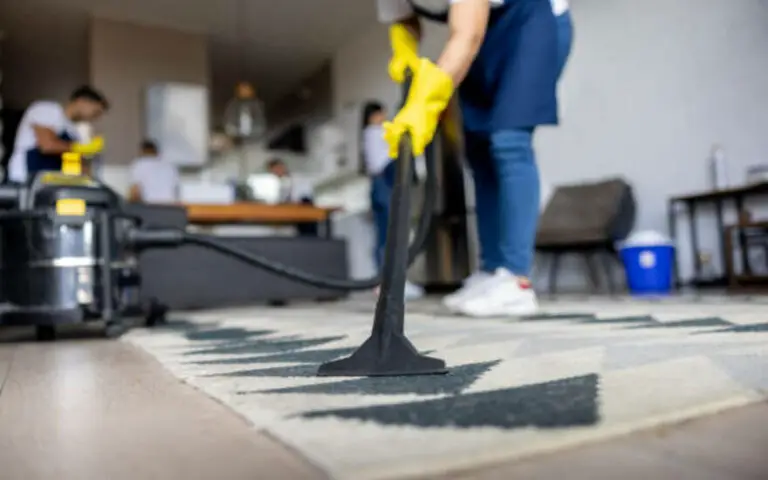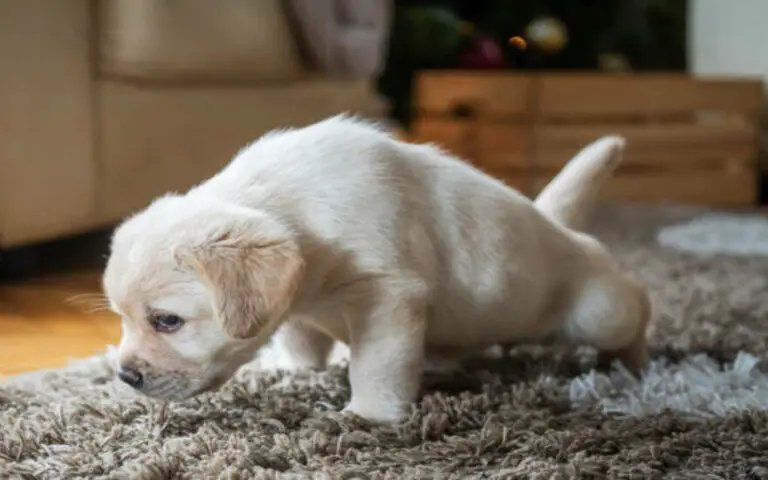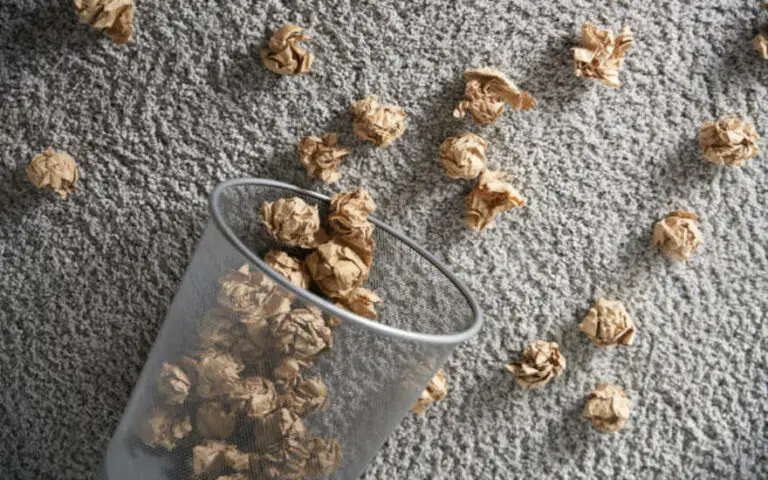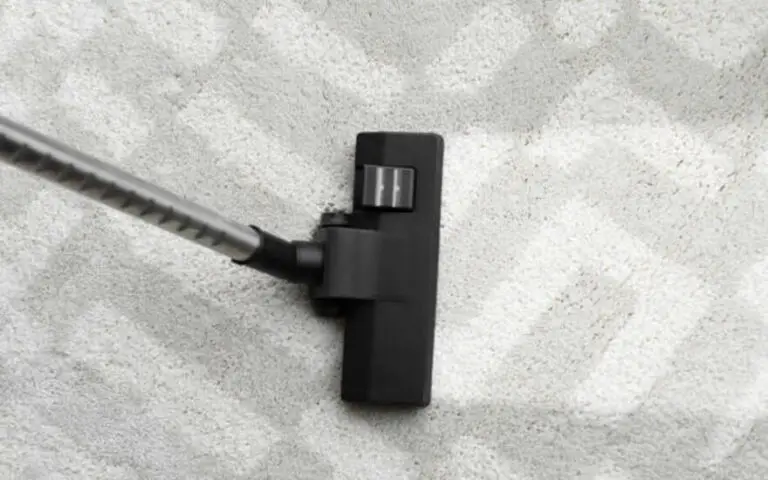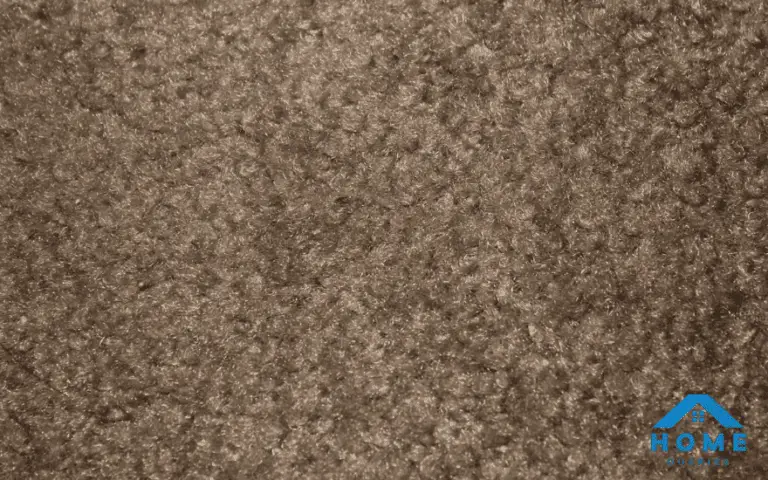In recent times, Berber is one of the most usual types of carpet in the world. If someone is here wanting to know more about Berber carpeting, then I can assure you that this person is in the right place. In this writing, I will briefly describe the 11 most common things one needs to know about Berber carpet.
I will try to define and explain Berber carpet along with how to take it several steps further. In this writing, I will cover the best Berber carpet brands. Also the pros and cons of the Berber carpeting, their solution and discover which one is the best suited for.
Berber carpets are made hand-woven. These carpets are made by the Berber people in North Africa and the Sahara. The carpets appear as both traditional and modern designs that are made out of different knitting patterns, dyes, and fabric textures.
Through my writing, one can get a clear idea about the Berber carpet. I hope you will keep in touch with me till the end. So without saying anything anymore, let’s get started.
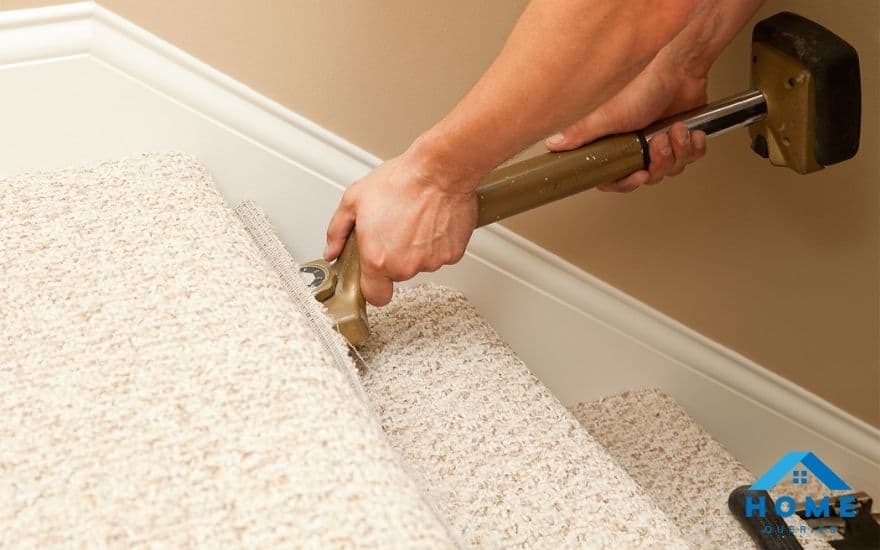
11 Things One Needs To Know About Berber Carpet :
Before buying Berber carpet, one needs several things to know about it. There are 11 most common things that one needs to know for sure before making the final decision of having Berber carpet for their home decorations. Allow me to help here, I will provide the idea about –
The idea of a Berber carpet and its variations. Pros and cons of Berber carpet. Different types of brands.
There are many more things that I have described, follow me till the last to know all about it. Hope it will be helpful and informative writing for those who are thinking about trying some different carpets such as – the Berber carpet.
1.What Is a Berber Carpet?
In general the term Berber refers to carpet that’s overall light in color and has flecks of darker colors – usually brown or gray. They are mainly woven with a distinctive loop pile that attaches to the backing and remains uncut. It is inspired by the weaving sort of the Berber people of North Africa.
Original Berber features a pronounced loop with lighter-colored wool or fiber. Darker specs of fiber also are woven in to offer it a distinctive look. Unfortunately, this suggests that finding Berber is harder than it should be because the term is now wont to define the carpet style also as color pattern.
Berber colored carpet is not an equivalent thing as Berber carpet and it is easy to get confused. When shopping, confirm the carpet fibers themselves are looped, not cut, and have pronounced knotting. They also should have a light and dark color mix.
2. Different Types Of Berber Carpets :
One such option for carpeting is the Berber carpet. Berber carpets have an extended and ancient history of the Berber ethnos of North Africa. While many of us within the rural areas of Tunisia and Morocco and nearby areas that host Berber peoples still use the development of handmade Berber carpets as their primary source of income. These carpets are increasingly difficult to seek out within the industrialized world.
Though many of us in North Africa and nearby regions have relatively uncomplicated access to genuine Berber carpets. Though further afield need to cope with mass-produced Berber carpets. But there are some Berber carpets on the planet, whether handcrafted or constructed during a factory and every one of these carpets has its ups and downs for those willing to try to do the research into them.
Most of the differences in Berber carpets come from the variability of cloth textures, dyed colors, and knitting patterns. Each of these elements can make a different type of carpet. For instance, there are sand colored carpets with thick knots to make a rough texture, elaborately patterned, multicolored carpets with small knots for a smoother texture, and a seemingly boundless variety of options in between.
Traditional Berber carpet made in historically Berber regions of North Africa and therefore the Sahara is understood as Mergoum which uses the traditional weaving methods that are exclusively wool-based.
They are continuously investigated closely by government inspectors to maintain the local cultural identity. More modern industrial produced Berber carpets use a loop pile construction method to make an appearance quite like the distinctive knot style patterns of a standard Berber rug.
The most frequently used sorts of Berber carpets are nylon, olefin fiber, and wool. While nylon and olefin fibers are the smallest amounts expensive, many of us with the funds to try to acquire genuine wool carpeting. The downside of wool is that it’s harder to wash and features a hard time incorporating modern methods of resisting staining.
Staining aside, it’s a really durable carpet that’s typically utilized in high-traffic areas of buildings, like offices and schools. It needs to be cleaned in a very certain way. Many cleaning companies are more than ready in this segment so that they can use the right methods of cleaning Berber carpet.
3. Pros and Cons :
As with most carpet and flooring styles, there are goodies and bad things. Berber features a long list for each side, so it’s important to know what I am actually getting.
Pros of Berber carpet –
The good news is that there are many things to love about Berber carpeting. The following list will explain more.
Durable :
One of the most valuable benefits of the Berber carpet is, it is highly durable. It can be able to withstand high-traffic areas which is also an important part of it.
Spill-friendly :
Natural stain-fighting is built into the weave and pattern of Berber carpets. It is also provided to get the spill soon enough.
Hides dirt well :
Coloring hides the appearance of dirt extremely well. So, no hassles with daily cleaning.
Affordable :
Berber is very cheap to produce. It is highly affordable and it is an excellent idea for a flooring solution. So, one can go for it without any hesitation, no doubt.
Easy to clean :
When it comes to cleaning, the Berber carpet is fairly easier than other carpets. With the use of the right tools, the Berber carpet is quite easy to clean.
Multiple choice :
There are multiple fiber choices in the Berber carpet. They allow you to pick density and softness for each and every room.
Cons of Berber carpet –
The bad news is that Berber is often a headache if not paid attention to. Below are a number of the more major concerns.
Limited color options:
The common problem with Berber carpets is they have only a few options while choosing color. Berber carpets have limited color options that can cause a problem as various colors are out there with other carpets.
Vacuum :
Lifted or frayed loops can become unraveled with pet nails or vacuums if not treated directly. Vacuuming can cause abnormal wear. Obviously, I want to use a vacuum without a brush roller, or one that can be turned off to prevent snags and tangling.
Rougher than newer carpet styles :
Berber is not the softest carpet rather than other carpets. Berber carpet is relatively rough. Unexpectedly the wool fiber options can get rough underfoot.
Hard to repair :
Installation and repairs are harder as finding seams and matching patterns between rolls is near impossible.
4. What Is The Price Of a Berber Carpet?
In the previous point, I have described the pros and cons of Berber carpet. So, at this point, if someone has decided that Berber carpet is the best option, then it may be time to start considering costs. Berber carpet is undoubtedly one of the cheaper sorts of carpet.
The good news is, nowadays Berber carpet comes in new styles and fibres. There are now various types of options. So, there is not one simple price when it comes to this carpet.
Simple, neutral Berber carpet is perhaps the most cost-effective thanks to going. Just like area rugs, the more patterns, and details, the extra money it’ll cost. With Berber carpeting, it is literally the same thing.
The more flecks and details, the costlier your project might be. With prices ranging from $5 to $8 per square foot, wool Berber carpet is probably the most expensive kind one will find. Nylon Berber may be a bit cheaper, but it varies between $3 to $4 per sq ft.
In the end, though, the standard of the carpet plays the most important role in pricing when it involves Berber carpet.
5. Design Options :
Many of them thought that Berber carpets did not go with the style, they were kind of dull and boring in the past. Those days have gone by, nowadays Berber carpets appear in different styles and colors. The materials used to make Berber carpets are mainly nylon, wool or polyester.
The styles are more substantial. People who like fancy things to decorate their house or office can easily rely on the Berber carpet. Some of the most common designs of Berber carpets are –
1. Simple Loop Berber
2. Patterned Loop Berber
3. Patterned Cut and Loop Berber
4. Cut Pile Berber
5. Multi-color Loop Berber
6. Cut and Loop Berber
6. Best Berber Carpet Brands :
Berber carpets are so popular no doubt. In this case, it can be difficult to know which brands to look at. Here are some of the best brands when it comes to loop style carpeting –
Mohawk Berber :
If someone is looking for a high-quality brand of Berber carpet, Mohawk Berber is the answer. They maintain their quality with high efficiency and have more choices than ever to pick through.
Shaw Carpeting :
Shaw Carpet is one of the best carpet and flooring companies nowadays. The Berber selection of this brand is breathtaking.
Stain Master :
It is maybe true that Stain master has fewer options than Mohawk. But when it comes to Berber choices, Stain Master is the best option to choose.
Karastan :
They provide higher quality carpets at an affordable price. The selection is quite decent.
Life Proof :
Berber carpet comes from the Home Depot brand and is highly affordable. They can be installed by Home Depot in many cases.
7. How To Install A Berber Carpet?
Berber carpet may be a popular sort of floor cover because it’s available in numerous different tones and colors. Because the carpet hides dirt and marks, it nearly always looks clean. There are six particular steps that one needs to follow while installing a Berber carpet –
Step 1 – Plan the Layout :
First, plan the layout of the carpet. The design of the layout should be as few as possible as every seam creates a weakness. Join the carpet in seams that run the opposite way to windows thus seams will be less visible when light shines through the window.
Step 2 – Nail Down the Tackless Strips :
Around the outside of the room nail down the tackless strips. Leave a few inch (1/2) gap between the wall and therefore the strip. To cut the strips to size in a better shape using a saw or a strip cutter.
Step 3 – Lay the Padding or Underlay :
Between the gripper strips try to lay the carpet padding or underlay. Choosing good carpet padding will make a Berber carpet more comfortable and also make it last longer. Join the seams of the pad with tape or a stapler also secure the underlay to the floor with staples.
Step 4 – Cutting the Carpet
Cut the Berber carpet to the proper size in order that it fits perfectly within the room. If the carpet contains any patterns, make sure that the pattern matches up. Any seams should be joined alongside seaming tape on the reverse side.
Step 5 – Fitting the Carpet :
When dealing with carpets that have seams, make sure that the pattern still lines up properly. Stretching the carpet properly is often diligent, but a sloppy fitting leads to the carpet which isn’t fitted properly and can wear too quickly.
Step 6 – Finishing Touches :
Check the quality of all the seams. Make sure all of them hold strong and appear fine. Complete the look of the final Berber carpet by trimming off any excess carpet around the edge of the room.
8. Maintenance and Care :
One downfall of Berber carpet is that it is often a touch hard to repair. Because of the way the loops are weaved, a little snag during this carpet can quickly become a much bigger one which will be costlier to repair. The cost of maintenance and repair depends on the damaged part; for lesser damage, the repairing kit would be for as low as $15 to do a DIY repair.
To stop snags from happening in the Berber carpet, one should avoid dragging things across the carpet and loosening the loops. It is very harmful to this kind of carpet. Also, it would lessen the lifespan of Berber carpets.
In reference to cleaning, the thick material of Berber carpets stops moisture from locking into the carpet. Many spills will not take much scrubbing and cleaning to get rid of. So while Berber carpet is not the foremost difficulty to wash, cleaning might be a drag due to how tight the weaves are.
It really all depends on what is spilt and how long it will sit before anyone attempts to clean it.
9. Lifespan of Berber Carpet :
The average lifespan of Berber carpet is 10 to fifteen years. Depending on maintenance and maintenance, Berber carpeting can last anywhere from five to twenty years. The type of fiber employed by the manufacturer also contributes to the longevity of this flooring.
Carpets made from Olefin fibers have a shorter lifetime than other Berber carpets. Olefin tends to be an oily fibre that draws dirt and stains after time. When the fibers in Olefin Berber carpets begin to matt and lay down it’s hard to revive them.
An Olefin Berber carpet can last only around three years. It is true that the lifespan of the olefin Berber carpet is so poor. So, if the Olefin carpet is looking dingy and matted it may be best to begin looking for a replacement.
Again nylon may be a far more resilient fiber and nylon Berber carpets will last tons longer than other Berbers. Nylon is more expensive but one gets what is paid for. The average lifetime of a nylon berber is 10 years.
A nylon Berber carpet is quite likely ready to be restored to love with a deep professional cleaning.
10. Is the Berber Carpet Outdated?
Tons of homeowners and renters alike can’t wait to hide up or completely do away with the carpeting in their homes. Just like there are different options for area rugs, there’s also quite one sort of carpeting. For some, the carpet is functional and comfy, and they’d wish to keep it around.
One popular type of carpeting is Berber. It is hard to believe but we all have probably seen Berber carpet before. It was really popular within the ‘90s and is making somewhat of a comeback in modern homes.
Berber is additionally referred to as “loop style carpeting” due to the way the fibers are formed with short, thick loops that weave back and forth to make the signature tight look.
While some consider it outdated, berber is understood for being one of the oldest and most durable sorts of carpet. Berber carpeting is usually found in low maintenance, high-traffic areas, like basements. As far as the style goes, this type of carpet typically comes in neutral colors with flecks of color here and there, making it versatile for various homes and designs.
11. Berber Carpeting and Pets :
While it’s true that tons of carpeting and pets don’t get along. Claws and paws can get caught on carpet fibers leading to wear areas, loose fibers, or maybe holes. Moreover, accidents can also soak into carpeting, through the pad, and even the subfloor below.
While Berber does have a bent to yank or pull when the loops are tangled, it’s actually an honest carpeting solution for homes with pets. The durable weave and fibers make it ready to get up to the rough and near-constant traffic pets provide. Because of the looped weaving of the carpet that produces raised knotting, pet accidents also tend to take a seat on top of the carpeting rather than soaking in through the pad and to the subfloor.
This won’t last, though, so while Berber is great at preventing stains and allowing liquids to soak in, I still need to soak them up and remove the liquids as soon as possible. Of course, it isn’t always great. Claws from running or playing animals can easily get caught on the loops which cause them to pull them up or out.
If this happens the snags on the carpet are susceptible to getting worse. I will have to keep an eye fixed out for these areas and mend them before they worsen.
Final Thoughts :
These are the customary 11 things that I needed to know about the Berber carpet. I have been using Berber carpet in my house for more than five years. I assure you that no regret will come if anyone has decided to use this carpet for their home decorations.
Berber carpet may be a solid flooring choice for a couple of different reasons. Not only is it cheaper than other sorts of carpet, but it comes in a bunch of various fiber types to tailor to customer needs. Wool works for a softer feel underfoot, whereas Olefin may be a more stain-resistant option.
Berber carpeting costs less money rather than other carpets and that doesn’t mean it is a lower quality flooring option for your home. As long as you stick with an honest brand that gives quality materials, Berber carpet is a reasonable, durable, and resilient flooring option.

